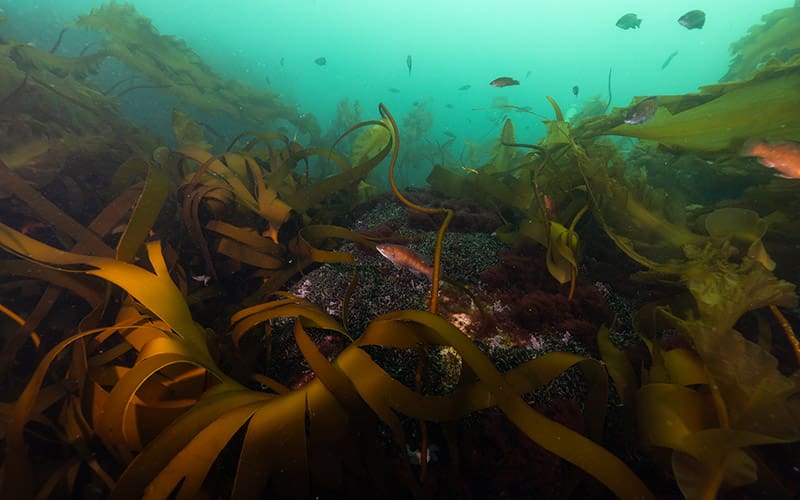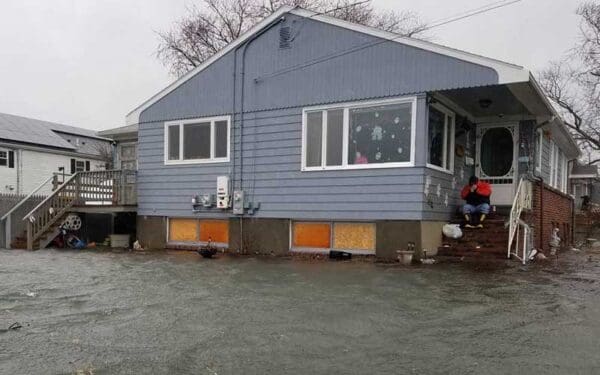
Cashes Ledge is a haven for sea life like kelp and fish. Photo: Jenny Adler
What is the relationship, if any, between the proposal to designate Cashes Ledge as a National Marine Sanctuary and the proposed wind farm leases in the Gulf of Maine that the Bureau of Ocean Energy Management is undertaking?
Carol [Mary Caroline] Magenau
Wellfleet MA
Answer from Priscilla Brooks, CLF’s vice president for ocean conservation:
We can balance building renewable energy infrastructure, like offshore wind, with protecting beautiful natural spaces, like Cashes Ledge!
Cashes Ledge is an irreplaceable stretch of ocean featuring vital habitats and rich marine life. The region has steep slopes, rocky ravines, and lush kelp forests, each of which provides a unique home for a remarkable array of ocean life. Critters ranging from spectacular starfish to the critically endangered North Atlantic right whales to the beloved Atlantic cod pass through or live in its waters. It’s a magical, special place, and CLF supports protecting it from all threats – including any form of industrial activity.
Cashes Ledge isn’t the only part of the ocean that CLF works to protect. We led the charge to create the Northeast Canyons and Seamounts Marine National Monument, the Atlantic Ocean’s first and only marine national monument. These underwater canyons and mountains are currently at risk as the Trump administration signals plans to open the monument to commercial fishing, potentially devastating the region’s millennia-old corals. In the face of these attacks on marine protected areas, CLF will only fight harder to preserve them.
Of course, offshore wind is vitally important as well. Without it, New England will be unable to meet our goals to fight climate change. A single turn of a large offshore wind turbine’s blade can power a home for a day. Doing our part to head off the worst impacts of climate change requires building offshore wind farms.
That’s why throughout the Gulf of Maine offshore wind planning process, which began in 2019, CLF advocated in support of responsibly cited offshore wind and joined many others advocating against leasing vulnerable, precious parts of the Gulf of Maine for offshore wind development. That included Cashes Ledge. As a result, the Bureau of Ocean Energy Management excluded the Cashes Ledge area from the final leases they offered for sale in the Gulf of Maine.
Opponents of offshore wind claim that any turbines are a blow to the ocean’s health. They argue that offshore wind kills whales. The truth is that there’s no evidence of offshore wind killing whales. And while you can’t build anything without some impact on the environment, we know that offshore wind is safer, cleaner, and more responsible than alternatives like fossil fuels.
Placing offshore wind farms in the right areas and building projects in a manner that minimizes the impact on ocean habitats, marine life, and coastal communities is possible.
We can work quickly and effectively toward a clean energy future while also protecting wildlife and the precious, wild places in our ocean that are vital for its health.



